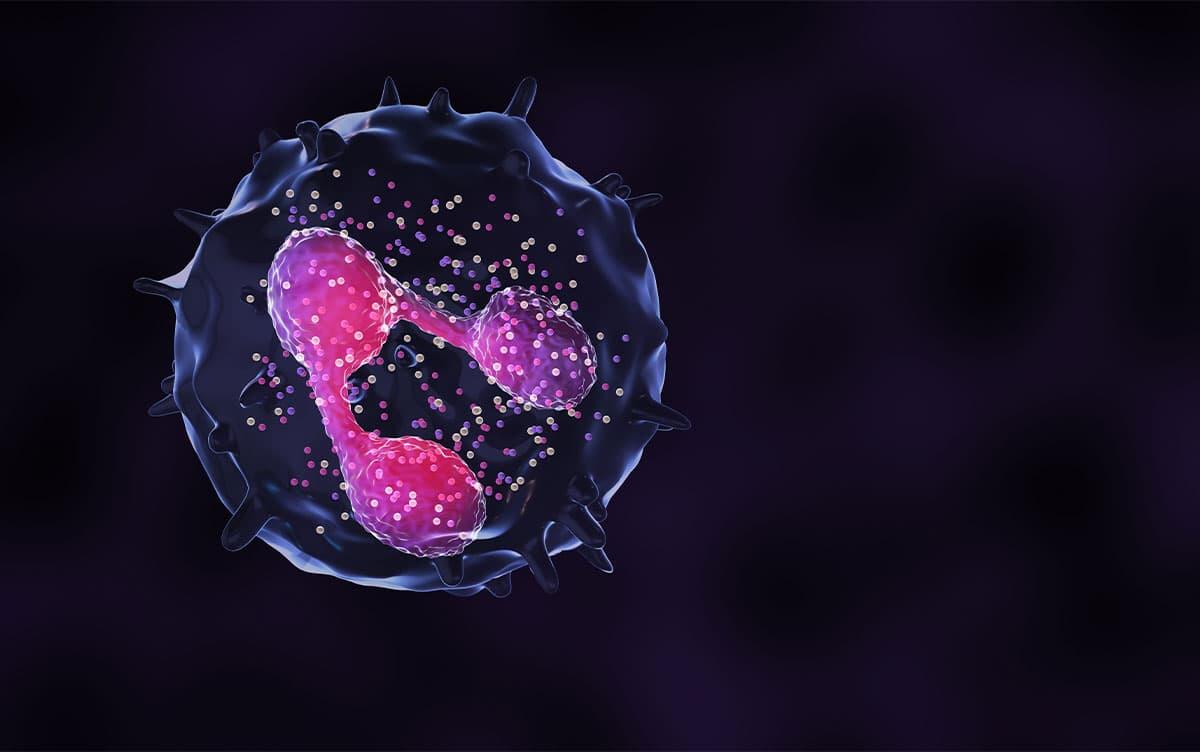Research News
Elucidating the Mechanism and Significance Behind the Rise of Immature Neutrophils During Infection and Inflammation
 Image by Nilang Kachare/Shutterstock
Image by Nilang Kachare/Shutterstock
During infection and inflammation, immature neutrophils—a type of white blood cell—increase in both the bloodstream and at sites of inflammation. Researchers at University of Tsukuba have found that under these conditions, type 1 innate lymphoid cells residing in tissues become activated, prompting immature neutrophils to migrate from the bone marrow into the blood and subsequently into inflamed tissues, where they help suppress inflammation. The researchers have also uncovered the cellular mechanisms driving this process.
Tsukuba, Japan—Blood contains two types of neutrophils, a type of white blood cell: mature neutrophils and immature neutrophils. Under normal conditions, most neutrophils are mature and play a role in host defense by inducing inflammation in response to pathogens. However, the proportion of immature neutrophils increases under conditions such as infection, tissue injury, physical stress, and cancer. The mechanisms driving this increase and the functional significance of immature neutrophils have remained unclear.
In this study, researchers found that in mice, when infection or inflammation occurs, a small population of immune cells called type 1 innate lymphoid cells becomes activated and produces interferon-γ (IFN-γ). This cytokine prompts immature neutrophils generated in the bone marrow to migrate into the bloodstream and subsequently to inflamed tissues. The researchers also identified a scaffold protein called Ahnak, expressed exclusively in immature neutrophils. Upon stimulation by IFN-γ, these neutrophils downregulate the chemokine receptor CXCR4 via Ahnak, enabling their release from the bone marrow. Furthermore, the study revealed that immature neutrophils produce interleukin-10 (IL-10), which suppresses inflammation and reduces tissue damage. Importantly, the researchers also found that immature neutrophils in humans express Ahnak and that IL-10-producing immature neutrophils increase in the blood of patients with COVID-19.
These findings suggest that while mature neutrophils induce inflammation and contribute to host defense, immature neutrophils modulate inflammatory responses through the production of IL-10, thereby playing complementary roles. These insights may inform the development of therapeutic strategies aimed at reducing tissue damage in a range of pathological conditions.
###
This work was supported by Grant-in-Aid for Scientific Research (A) 21H04836 (A.S.) and Grant-in-Aid for Early-Career Scientists 23K14498 (K.M.) from Japan Society for the Promotion of Science, the research grant in the KANAE Foundation for the Promotion of Medical Science (K.M.) and the research scholarship, provided by the Uehara Memorial Foundation (K.M.).
Original Paper
- Title of original paper:
- Type 1 innate lymphoid cell‒immature neutrophil axis suppresses acute tissue inflammation
- Journal:
- Nature Communications
- DOI:
- 10.1038/s41467-025-61504-8
Correspondence
Specially Appointed Professor SHIBUYA Akira
Institute of Medicine, University of Tsukuba




